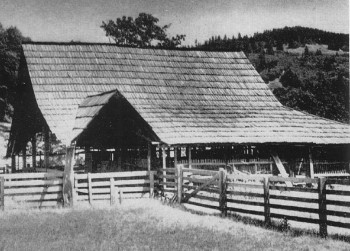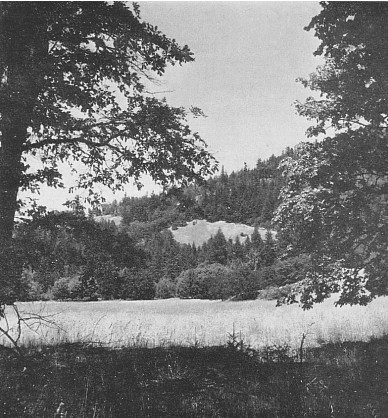
The citizens charged a Fort Anderson patrol with "killing one old man and wounding another belonging to a ranch occupied by three male Indians who have always been of an inoffensive character."
Investigation suggested that the settlers were less than accurate in their facts. "The Indian spoken of as an old man was between 35 and 40 years of age," it was announced, and his death occurred when the three braves "attempted to escape after being fully warned of the consequences."
The Fort Anderson patrol had been tipped off that a band of 200 hostile Indians were at the mouth of Redwood Creek and "very properly went in pursuit of them," according to the report. The three Indians were noticed going in the same direction, so the soldiers arrested them to prevent the band from being alerted. The "old man" was killed and a second brave wounded in an escape attempt.
The absence of citizen appreciation did not deter the Fort Anderson garrison from its duties during the seven months of operation in 1862. When the Humboldt county natives of Company B, 1st Mountaineers reestablished the post as "Camp Anderson for eight months in 1864, they, too, were unmoved by their fellow citizens' feelings of gratitude or criticism."
On a wide, flat field next to Redwood Creek, Fort Anderson was charged with keeping the peace from that creek, on the south, to the Klamath River on the north. With the abandonment of short-lived Fort Lyon, established midway between Anderson and Fort Baker by the same order in February 1862, Anderson's area of responsibility was moved south to meet that of Fort Baker.
The vast territory caused Captain Charles D. Douglas to complain, "I have my company in so many places that I have no force to scout with at present." He said that he "had but ten men able to do duty; the rest are sick."
Little sympathy was forthcoming, although district headquarters promised to return an 11-man detachment. "The colonel commanding regrets that he has no men to send you at present," the district adjutant wrote. ". . . You will furnish escorts from your post . . . for all trains with Government supplies, all military expresses, all U. S. mail riders, and so far as practicable for private trains . . . So far as possible you will take care to keep always one half of your effective men at the post."
Douglas took the 50 per cent rule to mean that the other half were to be busy patrolling. This they did with energy, despite the savage terrain that doubled the distance each patrol traveled, considering the up and down mileage.
Fifteen men on a scout in May 1862, went for seven days without seeing a single Indian and then were attacked by 50 while eating dinner. Pursuit was futile when the forests swallowed up the hostiles.
A week later the patrol chased an Indian to a river which he crossed on a dike. He broke the dike so the troopers could not follow, but a fire fight was waged across the water, seven Indians being killed.
A number of ranches in the vicinity of Fort Anderson were provided with troop detachments until a series of massacres in August 1862, showed the system to be unsuccessful. Whitney's Ranch, four miles from the post, was attacked on July 28. Whitney, a soldier, and a hired man were killed while two other troopers and an Indian boy "bravely held the house (on which 50 bullet holes were afterward counted), continuing to return the Indians' fire till their departure," the official report said.
The next day two express riders were ambushed, but escaped to Fort Anderson with one man and a horse wounded. Two more ranches were attacked and burned the day after. The resident of one ranch was wounded and his wife and child killed.
The district commander, Colonel Francis J. Lippitt, decided to take matters into his own hands and led a company of the 2d California Infantry on a seven-day scout more than 80 miles "fully equal to 140 miles over ordinary roads." No Indians were spotted, but there was one casualty when a member of the rear guard failed to answer a challenge and was shot by his sergeant.
After fall, 1862, Fort Anderson was not regularly garrisoned until February 1864, when the Mountaineers arrived. Their wide-ranging patrols met little action, the few Indians remaining off the reservation being too wily by that time. A 10-man scout trailed signs of an Indian cattle drive in August 1864, in the direction of the post, but noted that it left the trail two miles away in order to miss the Army.
A May 1864, patrol thought it had captured six Indians, but were disappointed to be banded a pass that permitted the braves to return to their camp and talk other Indians into surrendering.
TO GET THERE: From Eureka, California, go north on U.S. 101 through Arcata to State 299. Turn right (east), go through Blue Lake, 7 miles. About 12 miles further east, gravel road branches off to left (north). Follow this for 4 miles to Redwood Creek, site of Fort Anderson.


This page was reprinted with permission from Pioneer Forts of the Far West, published in 1965
Other Online Histories